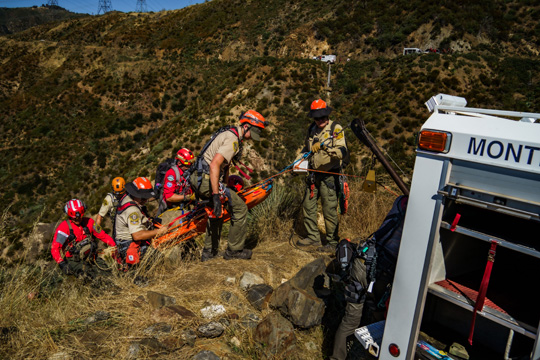
Photo by Charly SHELTON
MSAR and AMRT held a gripping joint training in the ANF.
By Mary O’KEEFE
On Sunday, members of Montrose Search and Rescue (MSAR) and Altadena Mountain Rescue Team (AMRT) joined forces for a training drill held in the Angeles National Forest (ANF).
Prior to going into the forest, where MSAR member Cindy England had led the staging of the drill’s actors and built a rescue scenario, the team reviewed the drill outline. On Sunday the goal was to first triage, then rescue.
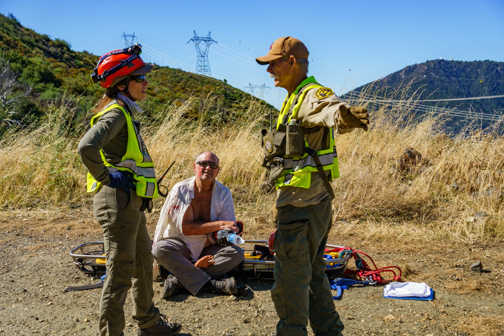
Team members reviewed the rules for Simple Triage And Rapid Treatment (START). This is a system in which emergency responders first assess a scene, determine victims’ injuries and place them into four categories. According to the National Library of Medicine the four categories are: black – deceased/expectant injuries incompatible with life or without spontaneous respiration; these victims should not be moved forward to the collection point. red – immediate severe injuries but high potential for survival with treatment – taken to the collection point first; yellow – delayed serious injuries but not immediately life-threatening; green – “walking wounded” victims with minor injuries.
The team members reviewed what symptoms determine each of these categories and then were sent to the drill.
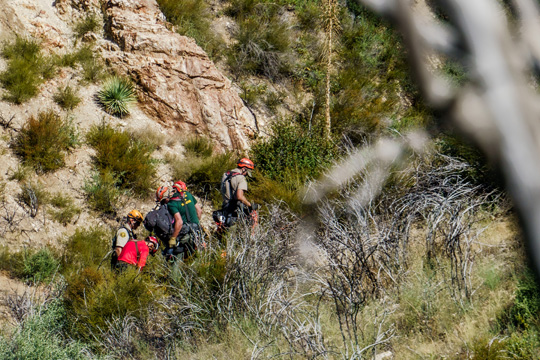
The scenario was an accident that involved multiple vehicles that had gone over the side of a cliff in the ANF. When members arrive they heard screaming from over the side and began to work together to assess and rescue.
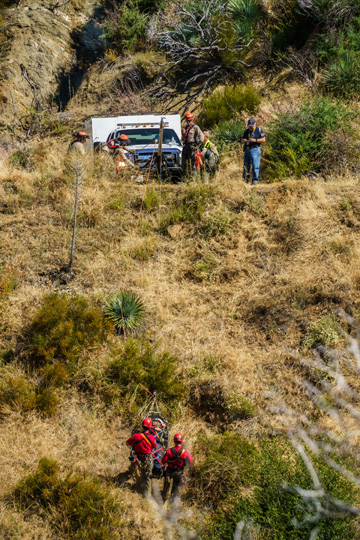
One of the screams heard was from a woman yelling for her missing baby. Even though this was just a drill, those words made everyone take a deep breath. Unfortunately this scenario is all too real and something these search and rescue teams often respond to. The difference this time, and the reason for the drill, was to review the triage process.
“We want to rescue,” England said. “That’s our first instinct.”
When members respond to an accident or find a missing person, they naturally go into their emergency medical technician mode and begin working on the first victim they find; however, in this type of scenario where there are multiple victims the team employed the START system.
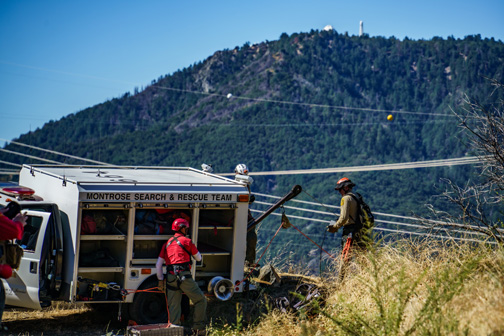
Two of the “victims” were MSAR trainees. Teeka Masermsin and Kevin Guthmiller both played accident victims.
There are many steps to joining MSAR and AMRT. Both Masermsin and Guthmiller said the rewards are worth the time devoted to becoming a member.
Guthmiller has been a volunteer firefighter and is now a physician. He is from La Cañada and was well aware of MSAR.
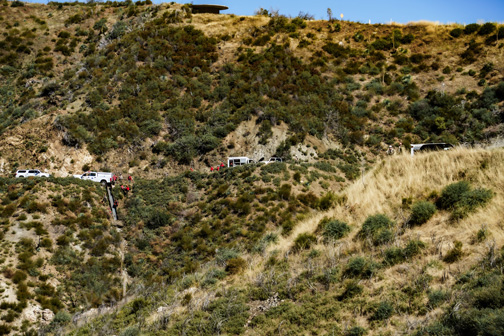
The teams began to talk about having a drill about six weeks ago. From there it took three weeks of planning, England said.
One of the actors on Sunday was Tim Sheedy, brother of MSAR team member Robert Sheedy.
“I [played] the driver of the Jeep and a drug addict,” he said.
He portrayed a driver under the influence whose car went over the side of the road with a baby and the baby’s mother in the passenger seat. The mother was played by Tim’s wife Jackie.
“We were driving and she was holding the baby on her lap,” he said of the scenario.
When the Jeep stopped rolling they realized the baby was missing. At first they thought s/he was thrown out of the vehicle.
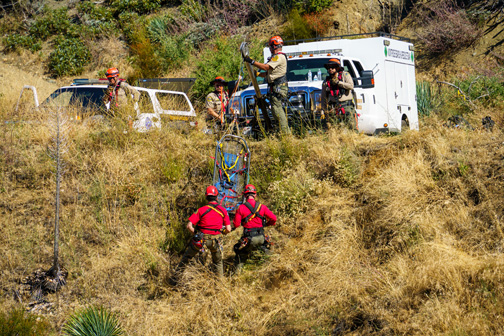
“But they found the baby in the back of the [vehicle],” he said.
The baby was deceased. Two adults also “died” in the accident scenario.
Sgt. John Gilbert, Los Angeles County Sheriff Dept. (LASD) – Crescenta Valley Station, said it had been a while since the team had been part of a drill and he was glad they were able to get together with AMRT for this one.
MSAR and AMRT members are volunteers through the LASD and are paid $1 a year. They are on call 24/7 and although the team responds to areas within the Angeles National Forest members also travel throughout the state and some also travel throughout the world to help others.
For more information or to donate to the teams visit montrosesar.org and amrt.org.
